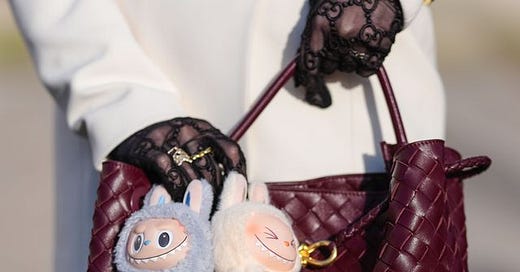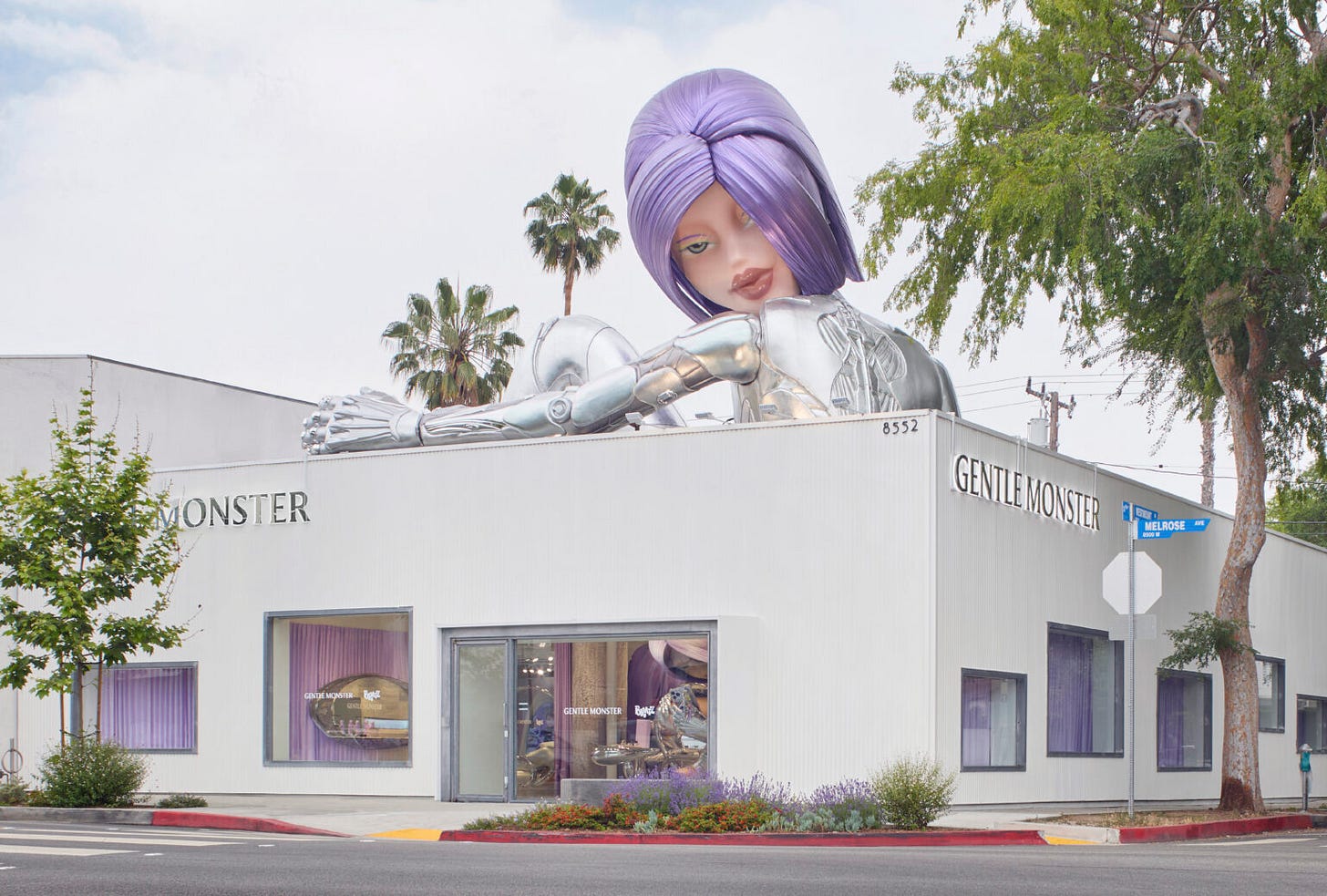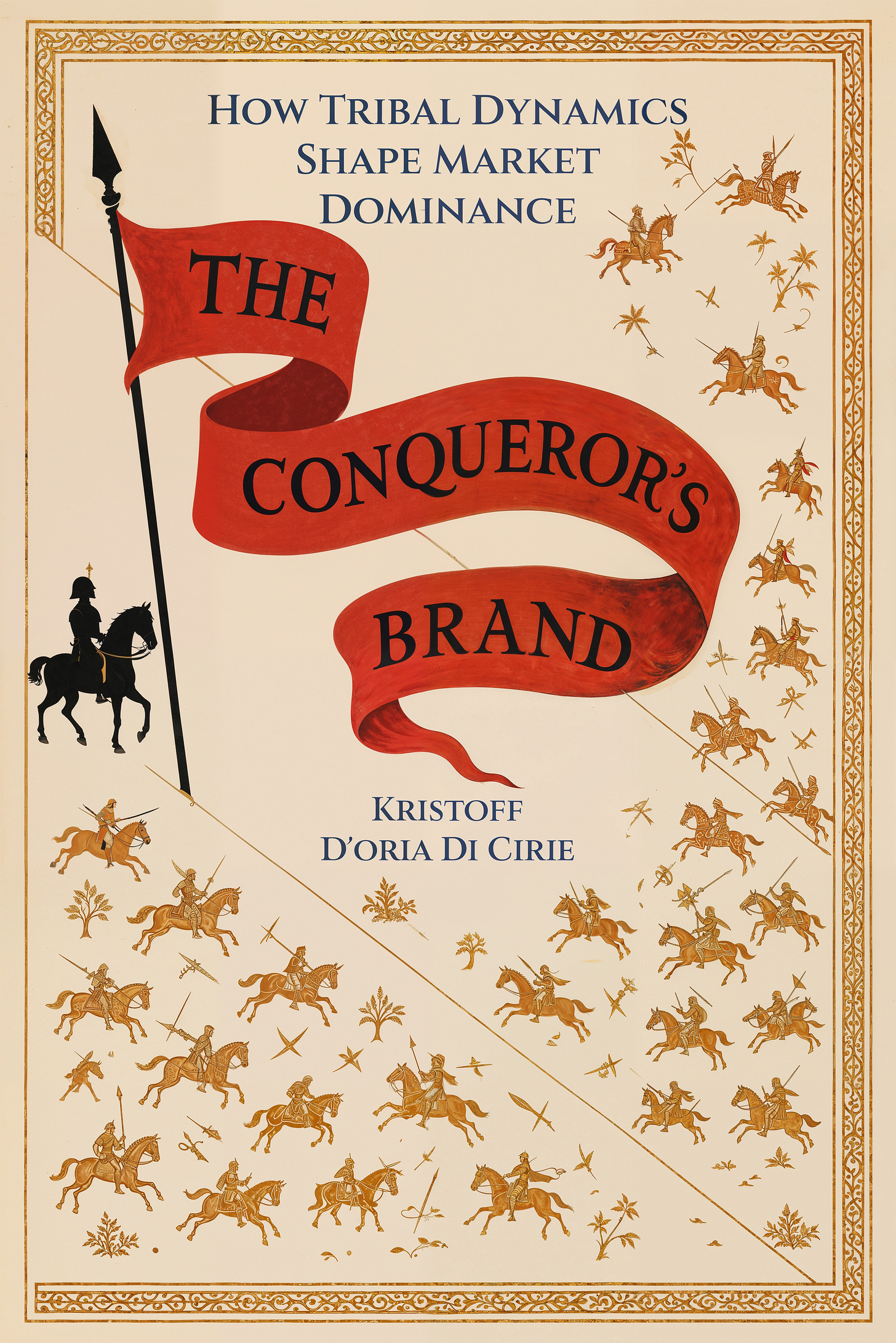Will Brands Become Passports?
Why a €131,000 doll makes perfect sense (and what your brand can learn from it)
Why a €131,000 doll makes perfect sense (and what your brand can learn from it)
TL;DR
Cultural capital is the new luxury: status comes from belonging, not just ownership.
€131,000 for a Labubu doll is proof that meaning and membership now outstrip material value.
Brands like Gentle Monster, Supreme, and Jacquemus succeed by designing rituals, not just transactions.
Third spaces (physical and digital) are the new sorting grounds for tribes.
Winning brands architect “passports” to subcultures, not just products for consumers.
My forthcoming book, The Conqueror’s Brand, is nearly finished and built for strategists, creatives, and leaders who want to stop chasing engagement and start building real cultural gravity.
The future isn’t about who has the loudest voice, it’s about who builds the most compelling club.
Summary:
Scarcity has shifted from things to meaning. Membership, not material, drives demand. The next generation of brands will thrive by creating coded spaces, rewarding deep engagement, and turning customers into community. The Conqueror’s Brand lays out how. If you want in, stay tuned.
My neighbour asked to borrow my printer last week.
Not for work or to print out boarding passes (am I showing my age??), but to create fake concert tickets for her livingroom wall. She'd screenshotted images of sold-out shows she couldn't afford, added fictional seat numbers, and wanted them printed on cardstock for authenticity.
"It's not lying," she explained whilst carefully arranging her counterfeit collection. "It just feels niceto see them up there - like I’m someone who actually gets to go.”
Hmmmm…
The same week, news broke that a human-sized Labubu doll had sold at auction for €131,000. Not a vintage Hermès. Not a rare Patek Philippe. A cartoon rabbit with elf ears and a mischievous grin, created by Hong Kong artist Kasing Lung.
If your first reaction is 'that's madness', you're missing the fundamental shift happening beneath our noses. This isn't about dolls or concert tickets or even retail. It's about the complete rewiring of how cultural capital operates when everyone has access to everything, yet belonging remains beautifully, brutally scarce.
We're witnessing the birth of what I call the membership economy: where brands stop selling products and start selling passports to increasingly exclusive cultural territories.
The Password
Walk into Gentle Monster's latest Bratz collaboration in Seoul, and you immediately understand the game being played. Supersized dolls tower over egg-capsule sunglasses displays whilst K-pop star Karina poses in full doll regalia. Every element serves as cultural currency, a test of fluency in a very specific aesthetic vocabulary.
The teenagers queuing outside aren't there for eyewear. They're there for access. To a worldview, a tribe, a shared language of references that separates the initiated from the merely curious.
This is retail as ritual. Shopping as sorting mechanism.
The real transaction isn't monetary; it's tribal.
What Gentle Monster understands, and what most brands miss entirely, is that modern consumers aren't buying products. They're buying membership cards to cultural clubs that grow more exclusive by design. The product becomes secondary to the signal it broadcasts about your cultural literacy, your insider knowledge, your rightful place in the hierarchy of cool.
This represents retail's fundamental shift from transaction to transformation. From selling things to selling becoming.
The Mythology
The Labubu phenomenon perfectly illustrates this cultural pivot. These deliberately unsettling creatures have spawned a global obsession that defies traditional marketing logic. No celebrity endorsements. No massive advertising campaigns. Just strategic scarcity and a visual language that rewards deep cultural fluency.
The blind-box format isn't about surprise; it's about commitment. You can't casual-shop your way into Labubu culture. You must invest time, develop expertise, understand the mythology. The physical queues outside pop-up shops run parallel to digital ones in Discord servers and private TikTok communities.
Sarah Thornton's research on subcultural capital explains why this works so brilliantly. In her seminal work Club Cultures, she revealed how exclusivity operates through cultural rather than purely economic mechanisms. Club kids in 1990s Britain didn't just buy records. They curated deep knowledge around obscure labels, underground venues, and aesthetic codes invisible to mainstream participants.
This knowledge became social currency more valuable than actual money.
Supreme operates identical dynamics. Knowing when drops occur, recognising cultural references, understanding resale values: these represent forms of cultural capital that distinguish community members from casual observers. Your brain processes this cultural learning as skill development, creating engagement patterns that resist the habituation plaguing traditional loyalty programmes.
Third Spaces and Tribal Formation
Physical retail spaces increasingly function as what sociologists call 'third places': environments where identity is performed, not just purchased. These aren't just drawing crowds; they're drawing lines. Creating in-groups and out-groups through shared cultural fluency.
The neurological implications prove profound. Research demonstrates that subcultural capital acquisition triggers reward pathways associated with mastery and competence rather than simple acquisition. Your brain doesn't just want the thing; it wants to deserve the thing.
Consider how Stüssy's Chapter stores operate. Each location curates local artists, hosts community events, and creates appointment-only experiences that transform browsing into belonging. The Shibuya location's monthly zine-making workshops aren't marketing; they're membership rituals.
The Art of Cultural Architecture
Successful modern brands enable what Mizuko Ito terms three modes of participatory engagement:
Hanging out: Casual community participation (lurking in Discord servers, following brand accounts)
Messing around: Experimental interaction with brand elements (creating content, sharing references)
Geeking out: Deep expertise development (becoming cultural curators, informal brand ambassadors)
The magic happens when brands create natural progression pathways between these modes without forcing artificial advancement through arbitrary achievement systems.
Golf Wang exemplifies this brilliantly. Tyler, The Creator's fashion label operates less like traditional retail and more like a cultural laboratory. Limited drops, cryptic Instagram stories, and pop-up experiences that reward cultural insiders whilst remaining deliberately opaque to casual observers.
Post-Ironic Belonging
We've entered what I call the age of post-ironic belonging. Generation Z simultaneously represents the most sceptical and most tribal generation in history. They see through traditional marketing manipulation whilst craving authentic community connection.
This paradox creates unprecedented opportunities for brands willing to abandon broadcast control in favour of participatory meaning-making. Success requires measuring community health through contribution patterns rather than consumption metrics.
The question isn't whether people are buying your product. It's whether they're building culture around it.
The Economics of Attention
In an era where every platform competes for human attention, genuine cultural participation becomes the ultimate scarce resource. Brands that understand this shift stop optimising for engagement and start architecting for belonging.
Consider how Jacquemus approaches retail. The brand's pop-up installations (a vending machine in a wheat field, a pink café in the South of France) create experiences that demand physical presence to access. No algorithm can replicate the neurochemical buzz of collective effervescence that Émile Durkheim observed when humans gather in shared physical space.
These spaces create what I term 'sparse signal, rich reward': environments where phones feel inadequate by comparison.
Building Cultural Passports
Whether you're building the next cultural phenomenon or trying to understand why your perfectly rational marketing campaigns fall flat, the principles remain consistent:
Signals over products. Every touchpoint should communicate cultural membership, not just functional benefits.
Mythology over merchandise. Invest in narratives that reward deep engagement rather than casual consumption.
Participation over persuasion. Enable community meaning-making rather than controlling brand narrative entirely.
The brands winning today understand that membership is the product. Everything else is just packaging.
The Conqueror's Brand
This cultural transformation forms the foundation of my upcoming book, The Conqueror's Brand. Written for strategists, creatives, and leaders tired of chasing empty engagement metrics, it provides frameworks for building brands that act less like products and more like passports.
Through neuroscience, anthropology, and real-world brand analysis, the book maps practical approaches for creating the kind of cultural resonance that transcends rational evaluation.
Because in a world where a cartoon rabbit can command €131,000, the old rules simply don't apply.
My neighbour understood something profound about identity construction in the digital age.
She wasn't creating fake tickets; she was rehearsing belonging.
The future belongs to brands that understand the economics of cool.
If you're building for that future, this book is for you. More details coming soon.
What cultural signals are you missing in your industry? Reply and let me know—I read every response.






